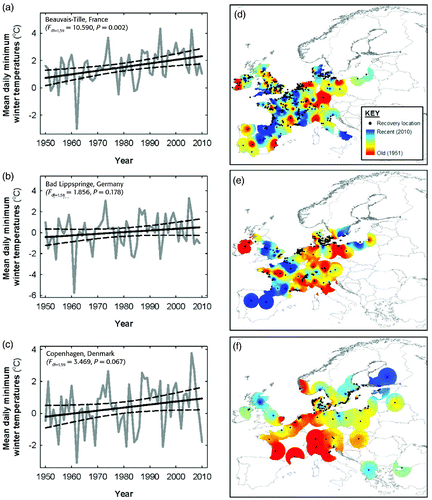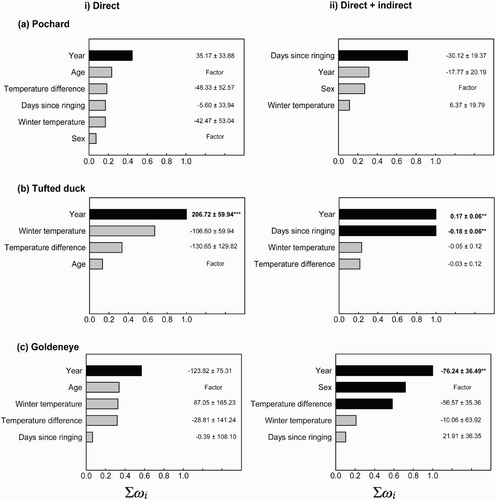Figures & data
Table 1. Numbers and percentages for a) the recovery circumstances and b) sex and age classes for Pochard, Tufted Duck and Goldeneye ringed between May and July and recovered between November and February, 1950–2010.
Figure 1. Trends in the mean daily winter (Nov–Feb) temperatures at a) Beauvais-Tille, France, b) Bad Lippspringe, Germany, and c) Copenhagen, Denmark, corresponding to the mean centroids of ring recoveries during winter for d) Pochard, e) Tufted Duck and f) Goldeneye respectively. Ringing recoveries are shown as closed circles and their dates of recovery (coloured scale) range from the 1950s (dark blue) to the 2000s (dark red) and have been spatially interpolated using kriging to illustrate any trend. Evidence of migratory short-stopping would be taken as a southwest to northeast trend progressing from red to blue indicating that the southwestern range edge was contracting and the northeastern one expanding, consistent with global climate change and observed positive trends in winter temperatures.

Figure 2. Relative importance of explanatory variables in explaining variation in the recovery distance of a) Pochard, b) Tufted Duck and c) Goldeneye using i) direct recoveries only and ii) direct plus indirect recoveries. Variables are ranked in order of the sum of their Akaike weights (Σωi ) within the top set of models, ie models with ΔAIC≤2. Black bars indicate those variables that were retained in the best single approximating model (ie that with the lowest AIC value) and grey bars indicate variables included in all other models within the top set. Variables judged significant at P<0.05 in the top model are shown in bold where ** indicates P<0.01 and *** P<0.001. Notation to the right indicates the strength of the slopes for each standardised covariate.

